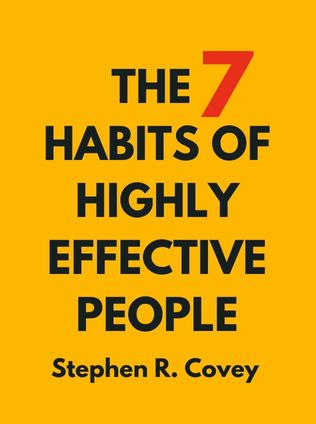
Creativity, Inc.
Overcoming the Unseen Forces That Stand in the Way of True Inspiration
By Ed Catmull
Published 09/2014
About the Author
Ed Catmull is a name synonymous with innovation and creativity in the realm of computer animation. As a co-founder of Pixar Animation Studios and a central figure in the evolution of computer-generated imagery (CGI) in film, Catmull’s career is a testament to the power of perseverance, vision, and a deep commitment to the creative process. His academic journey began at the University of Utah, where he earned degrees in physics and computer science. It was here that Catmull first encountered the idea of using computers to create images—an idea that would eventually lead him to revolutionize the film industry.
Catmull’s early career was marked by challenges and setbacks. Despite the initial skepticism of established animation studios like Disney, Catmull remained convinced of the potential of computer animation. His persistence led him to work with cutting-edge technology at Lucasfilm, where he and his team developed the Pixar Image Computer. This technology laid the groundwork for what would become Pixar Animation Studios, a company that would forever change the landscape of animated films.
In "Creativity, Inc.," Catmull reflects on his journey from a young computer science student with a dream to a leader of one of the most successful animation studios in the world. The book is not just a memoir but a guide for anyone who seeks to foster creativity and innovation, whether in business, the arts, or any other field. Through his experiences, Catmull shares valuable insights into the challenges and rewards of leading a creative organization.
Main Idea
The central theme of "Creativity, Inc." is the belief that creativity and innovation are not the exclusive domain of a few gifted individuals but are the result of a well-nurtured, collaborative environment. Catmull argues that for creativity to flourish, it must be supported by a culture that encourages candor, embraces failure, and protects new ideas. These elements form the foundation of Pixar’s success and are applicable to any organization that seeks to foster a creative and innovative workplace.
Catmull’s approach to leadership is both visionary and pragmatic. He recognizes that creativity is not a linear process; it involves experimentation, risk-taking, and a willingness to fail. Through the lens of his experiences at Pixar, Catmull provides readers with practical tools and strategies to cultivate a culture of creativity within their own organizations. He emphasizes the importance of continuous learning, adaptability, and the courage to challenge conventional wisdom.
At its core, "Creativity, Inc." is a call to action for leaders to rethink their approach to managing creative teams. Catmull’s insights are particularly relevant in today’s rapidly changing world, where innovation is more critical than ever. By fostering an environment where creativity can thrive, leaders can unlock the full potential of their teams and drive their organizations to new heights.
Table of Contents
- Introduction: The Power of Creativity
- The Birth of Pixar: From Dream to Reality
- Building a Creative Workplace
- Embracing Failure: The Path to Innovation
- Protecting New Ideas: Nurturing Innovation
- Finding Balance: The Art of Managing Creativity
- Growing Through Change: Adaptation and Innovation
- The Importance of Candor: Creating an Open Environment
- Lessons in Leadership: Sustaining Creativity
- Conclusion: The Future of Creativity
The Birth of Pixar: From Dream to Reality
Ed Catmull’s journey toward founding Pixar was fraught with obstacles, but it was also a journey of relentless pursuit of a dream that many thought was unattainable. His vision of creating the first computer-animated film seemed out of reach during an era when traditional hand-drawn animation was the gold standard. However, Catmull's belief in the potential of computer technology to transform the art of storytelling never wavered.
After earning his degrees in physics and computer science, Catmull joined the computer graphics lab at the New York Institute of Technology (NYIT), where he worked on developing software for digital animation. This experience was pivotal, as it allowed him to experiment with and refine the ideas that would later become central to Pixar’s success. Despite these advancements, Catmull and his collaborator Alvy Ray Smith struggled to convince major studios to invest in computer animation.
It wasn’t until Catmull joined Lucasfilm’s computer division that his dream began to take shape. At Lucasfilm, Catmull and his team developed the Pixar Image Computer, a groundbreaking technology that caught the attention of Steve Jobs. Jobs’ acquisition of the division in 1986 marked the official birth of Pixar Animation Studios. This partnership provided Catmull with the resources and creative freedom needed to pursue his vision on a grand scale.
"Technology alone is not enough. It’s technology married with liberal arts, married with the humanities, that yields the results that make our hearts sing." - Steve Jobs
Pixar’s early years were a period of financial struggle and identity crisis. The company was caught between its dual identities as a technology company selling high-tech hardware and an animation studio producing short films. Despite their technical achievements, the team’s true passion lay in filmmaking. The turning point came when Pixar decided to abandon its hardware business and focus solely on animation. This decision, though risky, ultimately paid off when Pixar partnered with Disney to create "Toy Story," the world’s first feature-length computer-animated film.
"Toy Story" was a critical and commercial success, setting a new standard for animated films and establishing Pixar as a major player in the industry. For Catmull, the success of "Toy Story" was just the beginning. He knew that maintaining the momentum and continuing to push the boundaries of what was possible in animation would require a different approach to leadership and creativity.
Building a Creative Workplace
Creating an environment where creativity can thrive was one of Ed Catmull’s primary goals at Pixar. He understood that for his team to produce groundbreaking work, they needed to feel safe, supported, and empowered to take risks. This understanding led to the development of Pixar’s unique workplace culture, which has been a key factor in the company’s enduring success.
One of the cornerstones of this culture is the promotion of candor. Catmull recognized that honest and open communication is essential for creative collaboration. In a creative environment, ideas need to be shared, debated, and refined. However, this process can only be effective if team members feel comfortable expressing their opinions without fear of retribution or ridicule.
To foster this kind of open environment, Catmull introduced the concept of Braintrust Meetings. These meetings bring together a group of trusted colleagues to provide feedback on a project’s progress. The key to the Braintrust’s success is the emphasis on constructive criticism. Feedback is offered in the form of "good notes," which focus on identifying problems and suggesting solutions rather than simply pointing out flaws.
Sign up for FREE and get access to 1,400+ books summaries.
You May Also Like
The Lean Startup
How Today's Entrepreneurs Use Continuous Innovation to Create Radically Successful Businesses
By Eric RiesWho Moved My Cheese?
An Amazing Way to Deal with Change in Your Work and in Your Life
By Spencer Johnson, M.D.Make Your Bed
Little Things That Can Change Your Life...And Maybe the World
By William H. McRavenThe Ride of a Lifetime
Lessons Learned from 15 Years as CEO of the Walt Disney Company
By Robert Iger



















